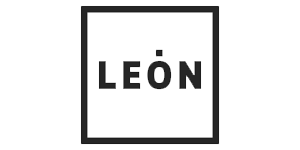Though the construction of the public sources(fountains) assumes his(her,your) development in the 17th century, under the reign of Carlos III, the origins of the water supply to León’s city already can place from the Roman epoch. The archaeological find of an aqueduct, work of the camp of the Legio VII Gemina, located to several kilometres to the northwest of the accession, was denoting the intention of the Romans it(he,she) brings over of the worn one and water supply.
Though the construction of the public sources(fountains) assumes his(her,your) development in the 17th century, under the reign of Carlos III, the origins of the water supply to León’s city already can place from the Roman epoch. The archaeological find of an aqueduct, work of the camp of the Legio VII Gemina, located to several kilometres to the northwest of the accession, was denoting the intention of the Romans it(he,she) brings over of the worn one and water supply.
It is not the Middle Ages epoch of constructions of this type, since scantily we know information on the existence of a source(fountain) in the Plaza of the Cathedral. Nevertheless, the supply was taking place(produced) across the extraction of drinkable waters of artesian wells and with the use of diverse preys arranged by the city from Leon. Already in the 18th century, the urban development politics(policy) of Carlos III projected so much in the Spanish capital since(as,like) in Two Sicilias it(he,she) was left to feel in other Spanish cities. The premeditation of the monarch of landscaping and embellishing the public spaces with sources(fountains) was reflected in León’s city with some representations that were beyond the urban engalamiento, since the matters of public health in the consumption of healthy waters were priority. The Meeting source(fountain), from 1773, already was claiming that one began to effect(to carry out) the Plan for Brought of Waters to the sources(fountains) and squares(seats) of León’s city. In 1789 already there was consisting the construction of the source(fountain) of Neptune, that of San Isidoro and that of Door Castle.
From the ornamental point of view, the use of public sources(fountains) has been an appellant, since during the 20th century, we can be diverse constructions as the source(fountain) of Santo Domingo, that of the Neighborhood of Holy Ana or that of Guzmán.
Fountain of Door Castle:
Also so called Principal Ark, it is constructed in 1785. It(she) was attached to a water warehouse(deposit) and finished off with a tablet of stone which inscription alludes to the water as element of public health. It(he,she) disappears in the 70s with the opening of the pedestrians’ passage(ticket). More displeased of the original place, there exists a small tube that gives water many people from Leon.
Tube Badillo:
Placed in the proximities of the only door preserved of the medieval fence that are kept in foot – though it is a work of beginning of the century XVIII-. It feigns a humble aspect, lacking in ornamentation and with the only(unique) exit of water. It(he,she) places in the oriental section of the wall. It dates his construction of 1788.
Fountain of the Market:
Located in the center of the paved Plaza of Santa Maria of the Way or also so called Plaza of the Grain. He has been a witness during centuries of the market of the bread and of the grain. More recently, he(she) contemplates the arrival of pilgrims to the lodging of the Convent of the Carbajalas to his(her,your) step along the Way of Santiago. The source(fountain) stops being constructed in 1789, emphasize two children seized to a column that alegorizan León’s city (represented by the column) nailed between(among) the rivers Bernesga and TorÍo. (Symbolized by the children). The sculpture is A Félix Cusac’s artistic creation and the work of the source(fountain) belongs to Isidro Cruela.
Fountain of San Martín:
The source(fountain) that nowadays we can observe was renewed in 1781 during the reign of Carlos IV, this way it is confirmed by the inscription that appears in the same one. The project of work belongs to the architect from Leon Jose Fernando Sanchez Pertejo. It(she) is linked to the environment of the Humid Neighborhood by the Church of St Martin and the Major Plaza which construction finishes in 1674.
Fountain of San Marcelo:
Reigning Carlos III year of MDCCLXXXVII.
“The common one of the neighbors for the public health and adornment of the city ” it is what shows one of them, inscriptions that are leaned to San Marcelo’s source(fountain). This construction, of sober aspect, is A Jose Velasco’s work. It has been displeased of place inside the same San Marcelo’s square(seat) for urban development reasons. The Palace of the Guzmanes, the building “Booties”, the Town hall and San Marcelo’s church they cover to the source(fountain) in the ” Plaza of the Doves ” turning this place into one of the most beautiful corners from Leon.
Fountain of San Isidoro:
Looking at the Basilica the source(fountain) places in the left part of the square(seat). It is raised in 1787 being An Isidro Cruela’s work. As more representative sculptural elements, there is identified a lion that holds a cartela that alludes to an inscription of the Legio VII. The original sculpture was A Mariano Salvatierra’s creation though the one that we contemplate is Andrés Seoane’s reproduction.
Fountain of Neptune:
The fountain of Neptune appears in 1789 in the Plaza of the Cathedral as the first location. The project of work belongs to the architect Isidro Cruela and the execution is of the same one removes to effect for Félix Cusac and Jose Velasco. Probably it is a question of the most monumental historical fountain of the city. It represents the god Neptuno. The mythological subject matter was very used in times of Carlos III, a clear example is the Cibeles in the capital of Spain. In 1913 the felling of the fountain is approved definitively arguing that was preventing from contemplating the beauty of the cathedral.
In 1931 it is moved to the Major Plaza where it remains until 1943, finally it is mounted in the Garden of San Francisco where it is possible to visit at present.

